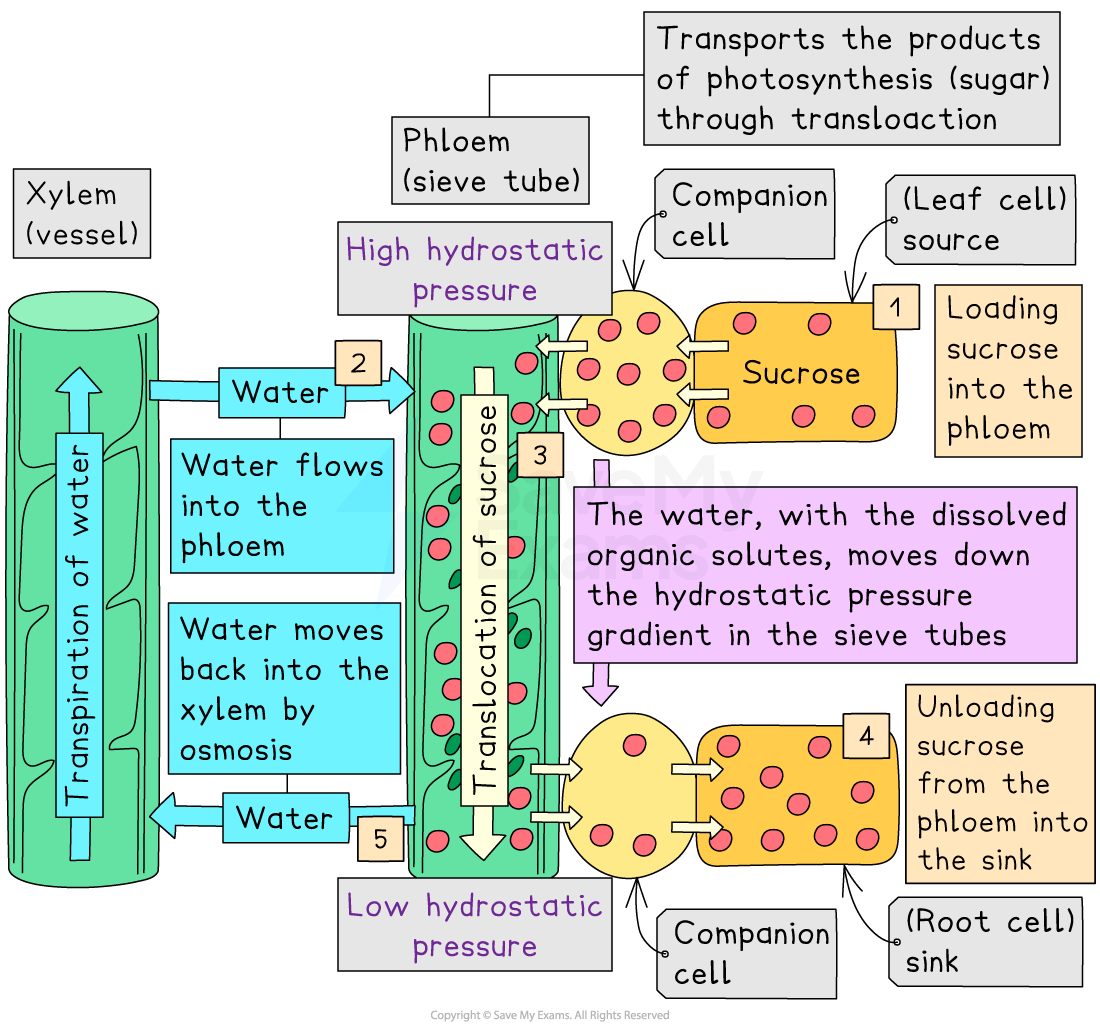The Mass Flow Hypothesis (AQA A Level Biology): Revision Note
Exam code: 7402
Translocation: mechanism
Transport of carbohydrates
The transport of carbohydrates in plants, e.g. sucrose, in the phloem is known as translocation
The process by which phloem sap moves in one direction along phloem sieve tubes is known as the mass flow hypothesis
The direction may differ depending on the location of sources and sinks in the plant
Translocation occurs as follows:
The sucrose loading mechanism uses active transport to load sucrose into the phloem at the source
Companion cells use ATP to actively pump hydrogen ions out of the cytoplasm into their cell walls
Hydrogen ions move down their concentration gradient back to the cytoplasm via a cotransporter protein, carrying sucrose molecules
Sucrose molecules then move into the sieve tubes via plasmodesmata
the high concentrations of solutes in the phloem lower the water potential and cause water to move into the phloem vessels by osmosis
Water can move in from the neighbouring xylem vessels
this results in increased hydrostatic pressure and generates a hydrostatic pressure gradient between the source and the sink; the contents of the phloem move towards the sink down a pressure gradient
at the same time sucrose is being unloaded from the phloem at the sink, lowering the water potential of the cells of the sink
water follows by osmosis, maintaining the hydrostatic pressure gradient between the source and the sink

Examiner Tips and Tricks
A common mistake is to describe the movement of sugars as “diffusion” instead of using the term mass flow. Make sure that you describe how pressure gradients drive the bulk movement of sap, not diffusion alone.

Unlock more, it's free!
Did this page help you?